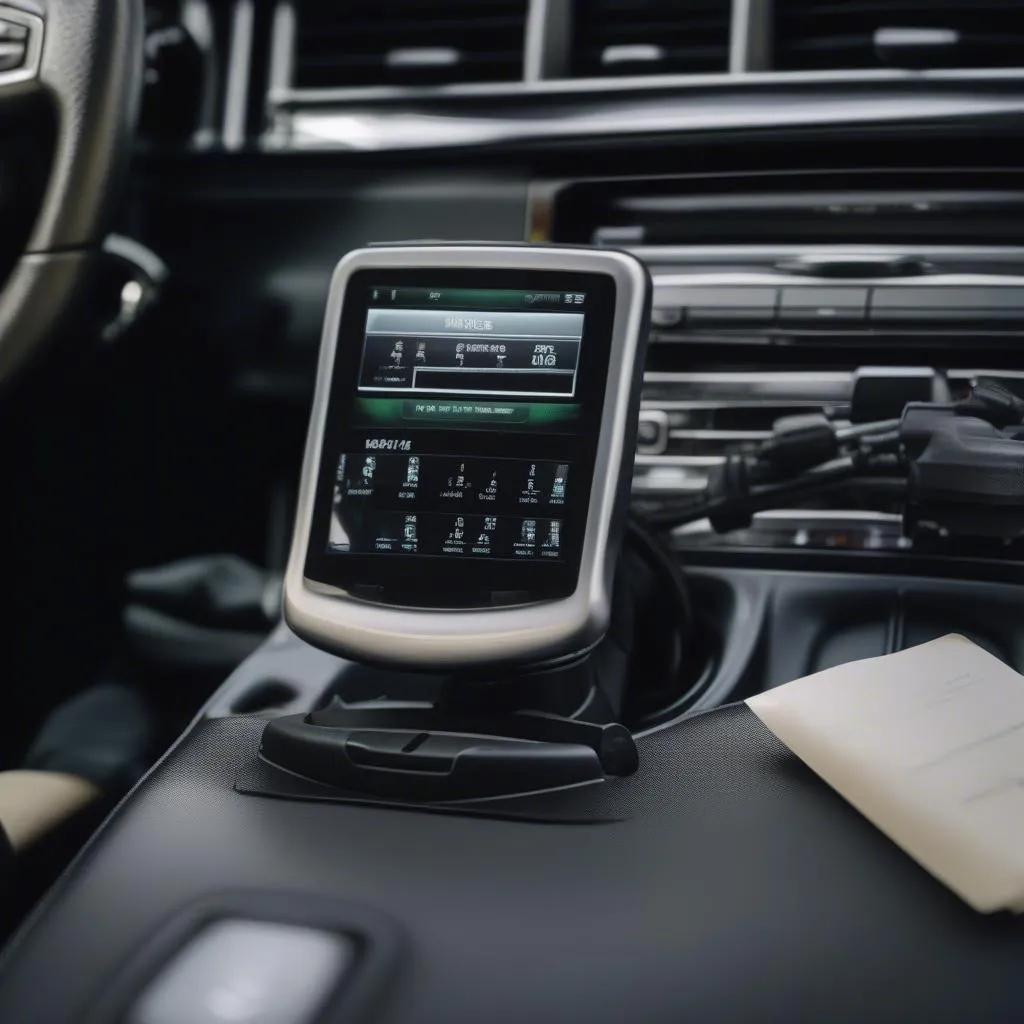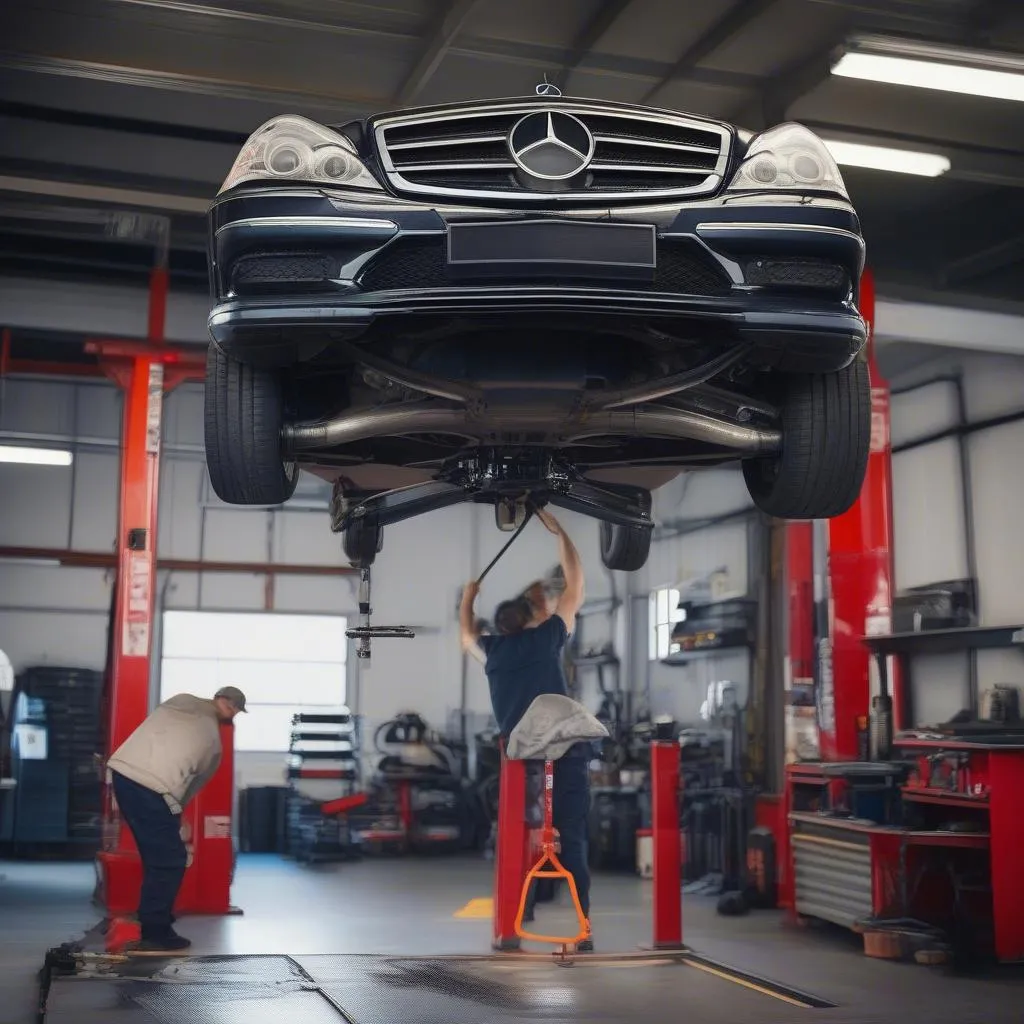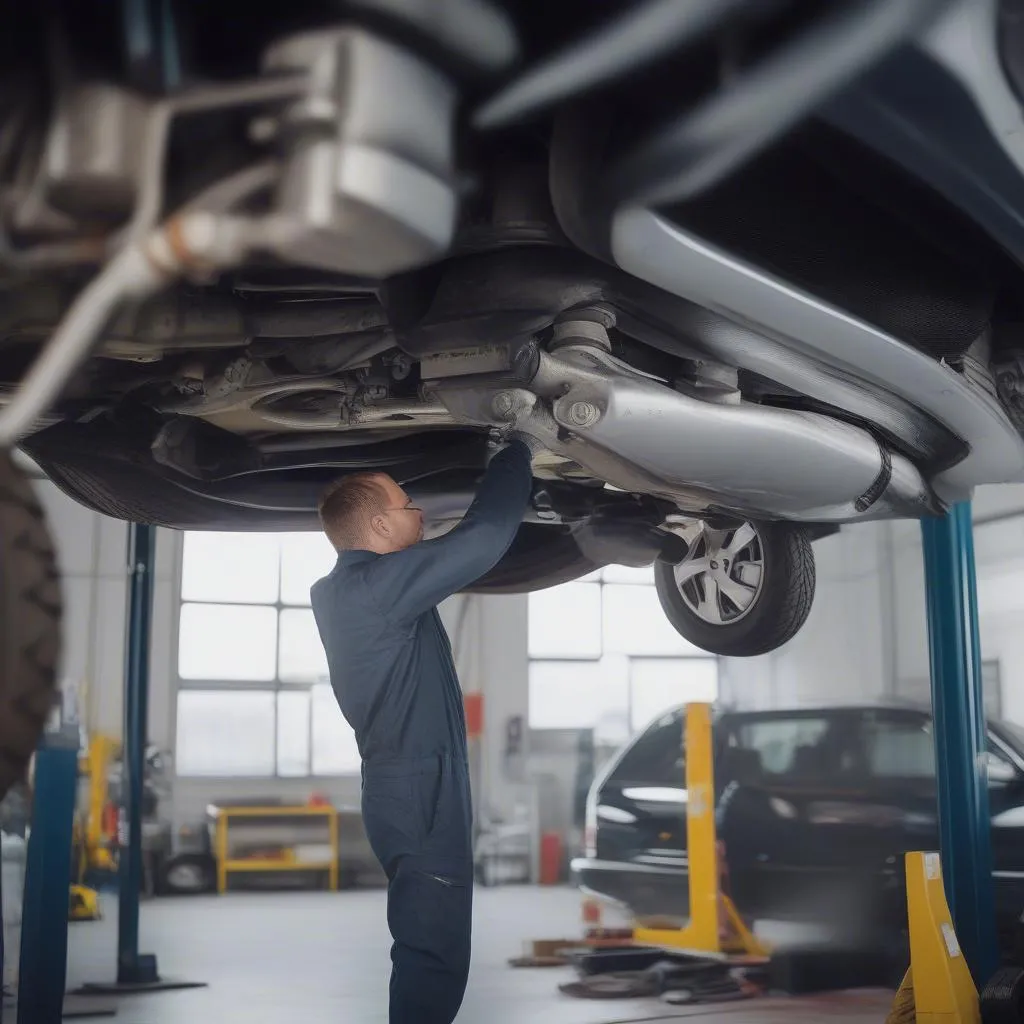A smooth, comfortable ride is synonymous with the Mercedes-Benz brand. However, even these automotive icons experience suspension issues. Whether you’re an experienced DIY mechanic or a Mercedes owner looking to understand common suspension problems, this guide will equip you with the knowledge to identify, diagnose, and potentially fix your Mercedes suspension.
Understanding the Mercedes Suspension System
Before diving into troubleshooting, it’s crucial to understand the different suspension systems Mercedes uses. From traditional coil springs to the advanced AIRMATIC system, each has unique components and potential issues. A misdiagnosis can lead to unnecessary repairs.
Common Mercedes Suspension Problems and How to Identify Them
Several telltale signs indicate a potential suspension issue in your Mercedes:
- Rough Ride: Do you feel every bump and imperfection on the road? This is a common symptom of worn-out shocks or struts.
- Vehicle Sagging: Is your Mercedes sitting lower on one side? This could signal a problem with your air springs, common in AIRMATIC systems.
- Unusual Noises: Clunking, banging, or squeaking sounds, particularly when going over bumps or turning, are often indicators of worn suspension components like bushings, ball joints, or sway bar links.
- Uneven Tire Wear: If you notice your tires wearing unevenly, it could be a sign of misaligned wheels due to a suspension problem.
- Pulling to One Side: Does your Mercedes drift to one side when driving on a straight, level road? This could be caused by worn suspension parts or uneven tire pressure but might also indicate a problem with your steering system.
 worn shock absorber
worn shock absorber
Essential Tools for Mercedes Suspension Repair
Having the right tools is crucial for a successful repair. Here’s a basic list:
- Jack and Jack Stands: Safety first! These are essential for lifting and securing your Mercedes.
- Wrench and Socket Set: To loosen and tighten bolts and nuts.
- Torque Wrench: Ensure bolts are tightened to the correct specifications, vital for suspension geometry and safety.
- Pry Bars: Helpful for separating suspension components.
- Penetrating Oil: A must-have for loosening stubborn, rusted bolts.
- Mercedes-Specific Diagnostic Tool: While not always necessary for basic repairs, a diagnostic tool like those offered by Cardiagtech can be invaluable for troubleshooting complex issues, especially with electronic suspension systems like AIRMATIC.
 Mercedes-Benz diagnostic tool
Mercedes-Benz diagnostic tool
DIY Mercedes Suspension Repair: Step-by-Step Guide
Note: While this guide provides a general overview, always refer to your Mercedes’ specific repair manual. Suspension work can be complex and is best left to professionals if you’re not comfortable with advanced mechanical repairs.
- Diagnose the Problem: Pinpoint the specific issue. This might involve visually inspecting components, listening for unusual noises, or using a diagnostic tool.
- Gather Necessary Parts: Order the correct replacement parts for your Mercedes model.
- Prepare the Vehicle: Park on a level surface, engage the parking brake, and use wheel chocks.
- Access the Suspension: Safely lift and secure your Mercedes using the jack and jack stands.
- Replace the Faulty Component: Carefully follow the instructions in your repair manual. This will involve removing the old part and installing the new one, ensuring all bolts are tightened to the correct torque specifications.
- Lower the Vehicle: Carefully lower your Mercedes using the jack.
- Test Drive: Drive your car and check for improvements.
 Mercedes suspension repair
Mercedes suspension repair
FAQs: Mercedes Suspension Repair
Q: How often should I get my Mercedes suspension inspected?
A: It’s a good practice to have your suspension inspected annually or every 12,000 miles, whichever comes first.
Q: Can I use aftermarket parts for my Mercedes suspension repair?
A: While aftermarket parts are generally cheaper, using genuine Mercedes-Benz parts is highly recommended. They are designed specifically for your vehicle and often come with a warranty.
Q: My AIRMATIC suspension warning light is on. What should I do?
A: This indicates a problem with your air suspension system. It’s best to use a professional-grade diagnostic tool, like those available on CARDIAGTECH, to read the specific fault codes and determine the underlying issue.
Conclusion
Maintaining your Mercedes suspension is crucial for a safe and enjoyable driving experience. By understanding common problems, recognizing the signs of trouble, and following proper repair procedures, you can keep your Mercedes gliding smoothly for miles to come. Remember, when in doubt, consult a qualified Mercedes mechanic.


